
Vice-Admiral Sir John Lockhart-Ross, 6th Baronet, known as John Lockhart from 1721 to 1760, was an officer of the Royal Navy who saw service during the War of the Austrian Succession, Seven Years' War, and the American War of Independence, and served for a time as a Member of Parliament.

Admiral Sir Richard Hussey Bickerton, 2nd Baronet, KCB, was a British naval officer. He was born in Southampton, the son of Vice-admiral Sir Richard Bickerton and first served aboard HMS Medway in June 1774, in the Mediterranean. His first command came in March 1779 when he was given HM Sloop Swallow as a reward for his part in an engagement with a much larger opponent. Bickerton later joined Rodney's squadron in the West Indies where he took part in the capture of Sint Eustatius in 1781. Making post captain on 8 February 1781, he took temporary command of HMS Invincible and fought in her at the Battle of Fort Royal on 29 April 1781.
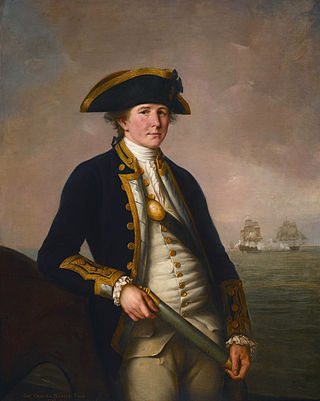
Admiral of the Fleet Sir Charles Morice Pole, 1st Baronet GCB was a Royal Navy officer, colonial administrator and politician. As a junior officer he saw action at the siege of Pondicherry in India during the American Revolutionary War. After taking command of the fifth-rate HMS Success he captured and then destroyed the Spanish frigate Santa Catalina in the Strait of Gibraltar in the action of 16 March 1782 later in that War.
John Elliot was a Scottish officer of the Royal Navy who served during the Seven Years' War and the American War of Independence. He rose to the rank of admiral, and served briefly as colonial governor of Newfoundland.
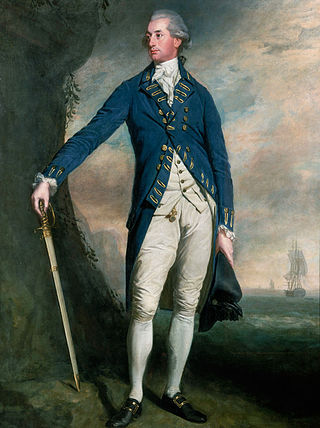
Admiral Sir George Montagu was a Royal Navy officer, the second son of Admiral John Montagu, and the brother of Captain James Montagu and Lieutenant-Colonel Edward Montagu.
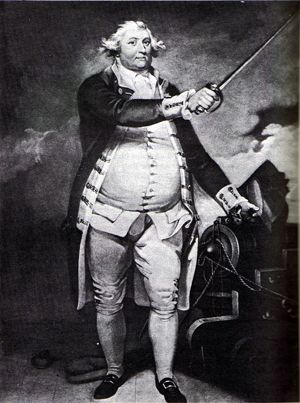
Rear Admiral Sir Charles Douglas, 1st Baronet was a descendant of the Earls of Morton and a distinguished British naval officer. He is particularly known for his part in the Battle of the Saintes during the American War of Independence where he helped pioneer the tactic of "breaking the line".

Admiral Sir Richard Onslow, 1st Baronet was an English naval officer who played a distinguished role at the Battle of Camperdown.

Admiral Sir Thomas Pasley, 1st Baronet was a senior and highly experienced British Royal Navy officer of the eighteenth century, who served with distinction at numerous actions of the Seven Years' War, American Revolutionary War and French Revolutionary Wars. In his youth he was renowned as an efficient and able frigate officer and in later life became a highly respected squadron commander in the Channel Fleet. It was during the latter service when he was awarded his baronetcy after losing a leg at the Glorious First of June, aged 60.
Sir John Strachan was a baronet and chief of Clan Strachan. He served in the Royal Navy, rising to the rank of captain and commanding a number of warships. His nephew, Richard Strachan, would also go on to have a distinguished career in the navy.
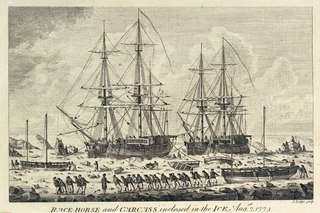
HMS Carcass was an Infernal-class bomb vessel of the Royal Navy, later refitted as a survey vessel. A young Horatio Nelson served aboard her as a midshipman on an expedition to the Arctic in 1773.

Sir Charles Henry Knowles, 2nd Baronet, GCB was an officer of the Royal Navy, who saw service during the American War of Independence, and the French Revolutionary and Napoleonic Wars, eventually rising to the rank of Admiral. He was an extraordinary figure and a great tactical innovator. Highly intellectual, he authored a number of signal books and had the chance to put his ideas into practice during his naval career. Knowles was at times beset by problems with discipline aboard his ships, often due to large proportions of raw recruits and untrained seamen. This may have been a factor in his rocky relationship with his superior, Sir John Jervis, which eventually led to Knowles's retirement from active service after the Battle of Cape St Vincent, and his concentration on scholarly studies of the issues affecting the naval service.
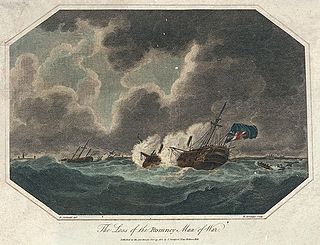
HMS Romney was a 50-gun fourth rate of the Royal Navy. She served during the American War of Independence, and the French Revolutionary and Napoleonic Wars in a career that spanned forty years. Five ships of the Royal Navy have been named HMS Romney. The origins of the name are from the town of New Romney, although it may be that the name entered the Royal Navy in honour of Henry Sydney, 1st Earl of Romney.
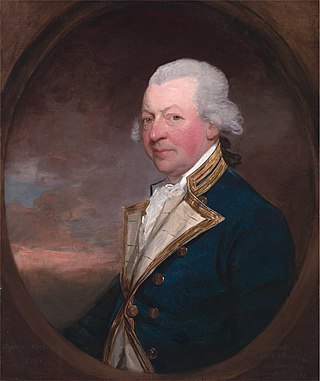
John MacBride was a British officer of the Royal Navy and a politician who saw service during the Seven Years' War, the American War of Independence and the French Revolutionary Wars, eventually rising to the rank of Admiral of the Blue.
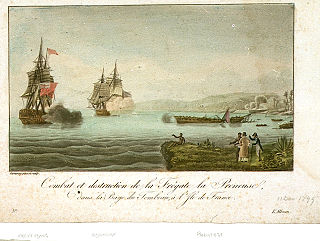
HMS Adamant was a 50-gun Portland-class fourth rate warship of the British Royal Navy. She served during the American War of Independence, the French Revolutionary Wars, and the Napoleonic Wars in a career that spanned thirty years.
Edward Thompson was an English Royal Navy officer who rose to the rank of captain, known also as a literary figure with the nickname "Poet Thompson".
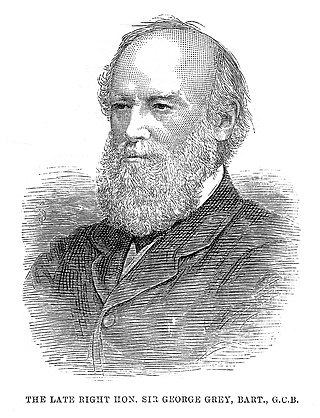
Sir George Grey, 1st Baronet, was a British Royal Navy officer and a scion of the noble House of Grey who served as Master and Commander of the Mediterranean Fleet. He joined the Royal Navy at the age of 14 and was on active service from 1781 to 1804, serving in the American War of Independence, the French Revolutionary War and the Napoleonic War. He served as Flag Captain for John Jervis, Earl of St Vincent and later as Flag Captain for King George III on his royal yacht. From 1804 to 1806, he was Commissioner at Sheerness Dockyard, and from 1806 until his death in 1828 he was Commissioner at Portsmouth Dockyard.
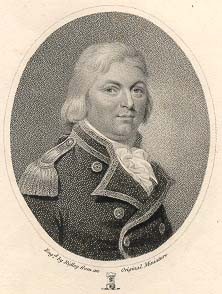
Philippe d'Auvergne was a British naval officer and the adopted son of Godefroy de La Tour d'Auvergne the sovereign Duke of Bouillon. He chose a career in the Royal Navy that spanned a period of history where Great Britain was at the centre of wars and empire building and took him from Boston and the War of Independence to espionage with French Royalists; prisoner of war to shipwrecked; all this whilst hoping to become a Walloon ruler or, at least, heir to a princely fortune.
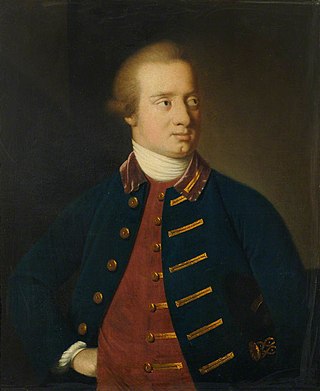
Robert Fanshawe was a British officer of the Royal Navy and a Member of Parliament.
John Carter Allen (1724–1800) was an 18th century Royal Navy commander who rose to the rank of Admiral.
The Lisbon station also known as Lisbon Station and Coast of Spain was a formation of the British Navy operating off the coast of Portugal from 1779 to 1782 before being disbanded and then again from 1783 until 1841.















